A few years after graduation, I went to a post office to send a letter to a friend. I bought a postage stamp from the commemorative series "Beautiful Korea Definitive Stamps" featuring nine domestic landmarks including Dongbaekseom Island in Busan, Namdaemun (Sungnyemun) Gate in Seoul and Hwaseong Fortress in Suwon, Gyeonggi-do Province.
Even a tiny stamp holds a lot of information on Korea, I thought. So I decided to learn more about the country through stamps and eventually started collecting those displaying landmarks and people. This series is my introduction to Korean history and culture through stamps issued by the Korea Post.
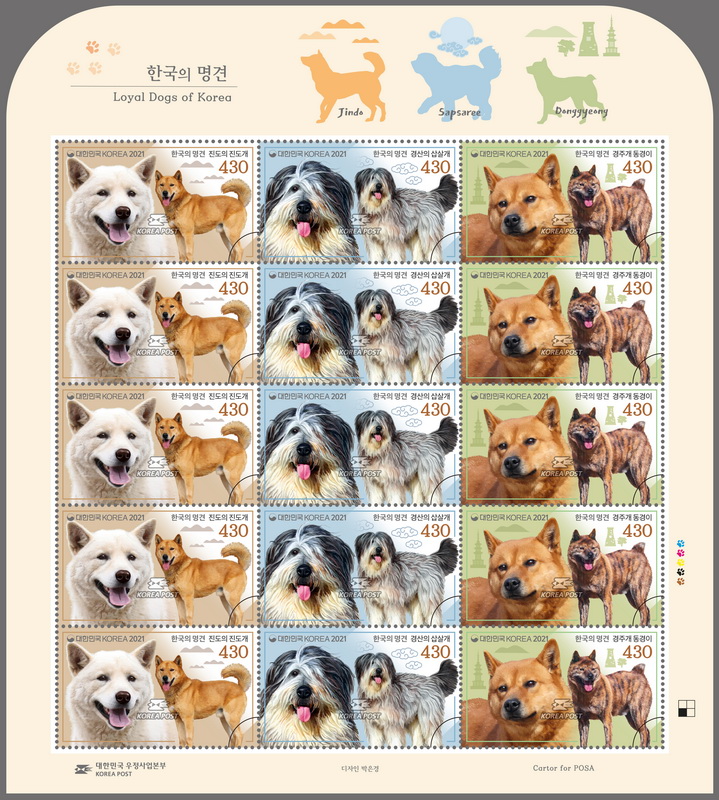
The Korea Post on Oct. 29 issued the commemorative stamp series "Loyal Dogs of Korea." From left are the Jindo, Sapsaree and Donggyeongi breeds. (Korea Post)
By Elias Molina and Lee Jihae
Every country has famous indigenous dogs, and Korea's include the breeds Jindo from Jindo Island, Jeollanam-do Province, Sapsaree from Gyeongsan, Gyeongsangbuk-do Province, and Donggyeongi from Gyeongju, Gyeongsangbuk-do.
The Korea Post on Oct. 29 issued commemorative posts honoring these three breeds native to the nation.
Park Jong-seok, President of the Korea Post, said, "Korea's famous indigenous dogs are part of Korean culture and history. They are our people's longtime friend and promotional ambassadors of Korea worldwide."
"Through the latest set of commemorative stamps, please look at Korea's famous indigenous dogs designated Natural Monuments and reflect on their value as cultural heritage."
Jindo
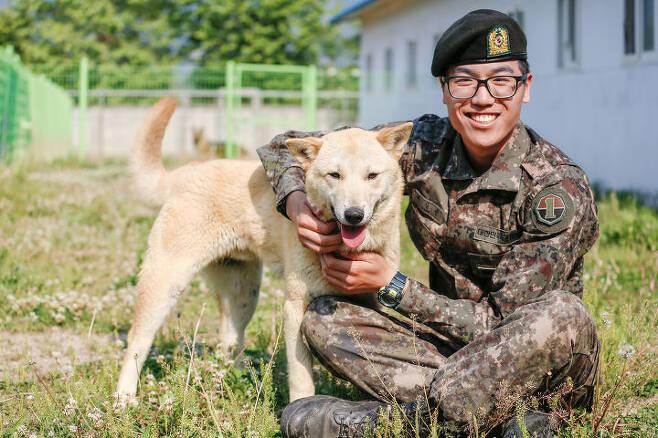
Jindos since 2015 have been used as military dogs. (Republic of Korea Army)
The Jindo breed is considered the leading one on the Korean Peninsula. Indigenous to the southwestern island of Jindo, Jeollanam-do Province, the dog is a descendant of those raised by Koreans in the Stone Age that adapted well to the island's environment.
Jindos have fine qualities including a pleasing appearance, loyalty, cleanliness, bravery, boldness and an instinct to return home. Designated Natural Monument No. 53, the breed is managed by the government. In November 2015, they became the nation's first dogs registered for military uses such as detection and search operations.
The dogs are usually 45-53 cm long, weigh 15-20 kg and are classified as medium size. They were officially registered in 2005 as a breed by the U.K.'s Kennel Club, which helped promote the breed worldwide.
Sapsaree
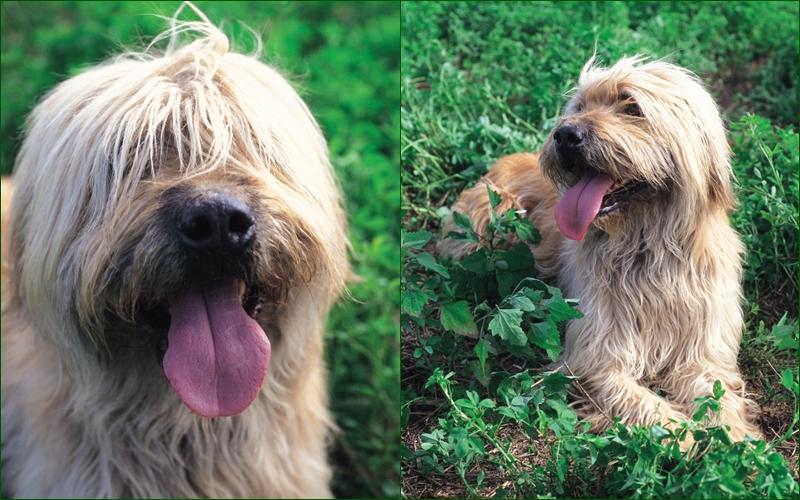
Sapsarees are said to resemble male lions with manes, as their long fur cover their faces. (iclickart)
The name "Sapsaree" is a combination of sap, which in pure Korean means "chase away," and sal, which means "misfortune." So the breed's name literally means "a dog that chases away misfortune."
While the canine does look bold and confident enough to ward off evil spirits, the warm impression it gives reflects mildness, obedience and strong loyalty. Since ancient times, Sapsarees have been considered a guardian dog by Koreans. The dogs often appeared in paintings hung on doors or entry corridors to prevent evil spirits from entering a home, and also in folk and genre paintings. This is also why the dogs have guarded the nation's easternmost island of Dokdo.
Native to Gyeongsan, Gyeongsangbuk-do Province, the breed is designated Natural Monument No. 368.
Sapsarees are normally 55-63 cm long and weigh 22-30 kg and classified as long or short haired depending on fur length. The long-haired dogs have fur that covers their faces and for a long time, they were called "lion dogs" because their long fur made them look like male lions with manes. With prominent ears, eyes, mouth and nose, the short-haired dogs have tails with abundant fur and manes only on their necks and lower bodies.
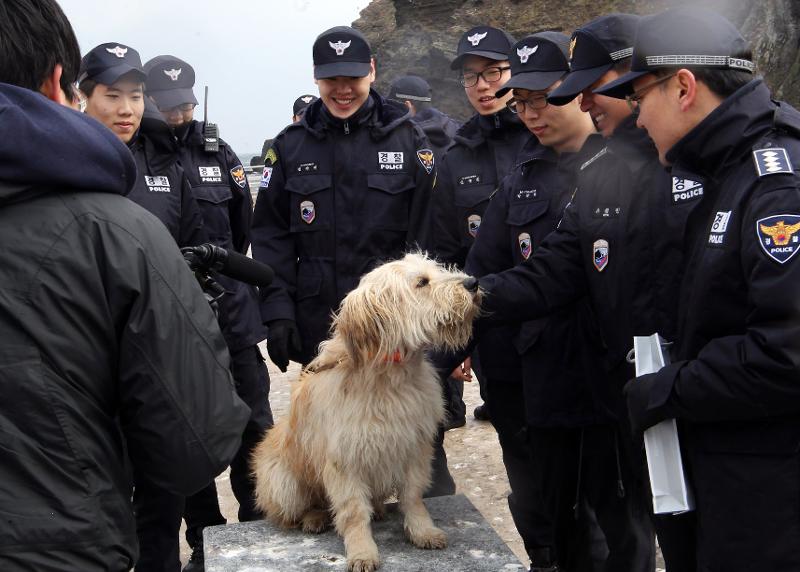
With a name that literally means "a dog that wards off misfortune," Sapsarees since the 1990s have served as guardian dogs on Dokdo Island. (Yonhap News)
Donggyeongi
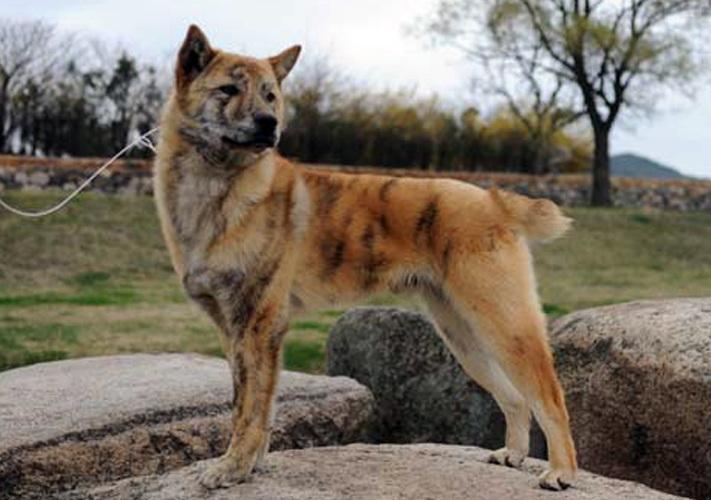
The Donggyeongi breed is indigenous to Gyeongju, Gyeongsangbuk-do Province, and has very short or no tails. They are classified as white, yellow or black or those with tiger-like stripes. (Yonhap News)
The Donggyeongi breed is the oldest among the nation's indigenous dogs. Dolls of them made from dirt in the fifth to sixth centuries have been excavated from ancient tombs of the Silla Kingdom. Records of the dog also exist in "The Chronicles of the Three States," a historical reference book published in 1145 on the three ancient kingdoms of the Korean Peninsula: Goguryeo (37 B.C.-A.D. 668), Baekje (18 B.C.-A.D. 660) and Silla (57 B.C.-A.D. 935), as well as "Donggyeongjabgi," a geography book on the Gyeongju region published in 1845.
Native to Gyeongju, Gyeongsanbuk-do Province, the breed got its name from its native city, which during the Goryeo Dynasty (918-1392) was called "Donggyeong." Ancient writings show that the short-tailed dogs reared in Donggyeong were called "Donggyeonggu."
These dogs have either very short or no tails at all and come in white, yellow or black or have tiger-like stripes. With a torso measuring 44-49 cm and weighing 14-18 kg, Donggyeonggus are very friendly to humans and get along with children and the elderly as well. They are smart and highly trainable.
A think tank for the preservation of the breed under the Korean Gyeongju Donggyeong Dog Association has a system to manage the dog and supervises management of and research on the breed. The Donggyeonggu in 2012 was designated Natural Monument No. 540.
eliasmolina@korea.kr